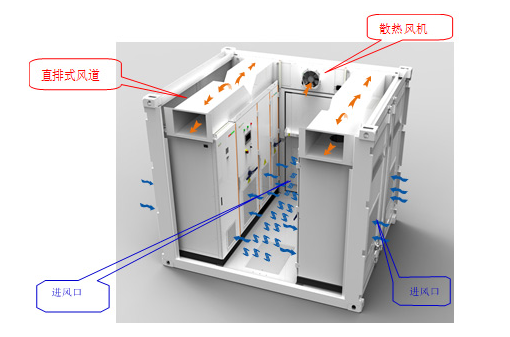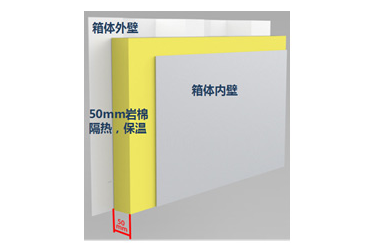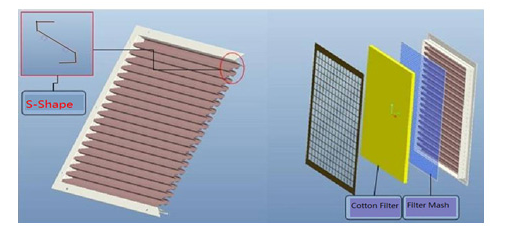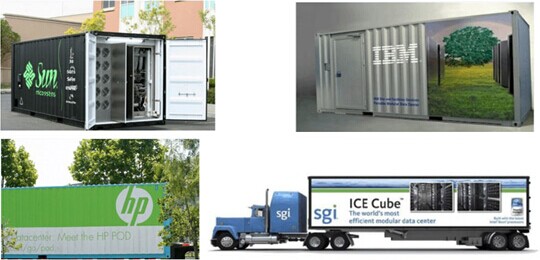The inverter is a key component of the photovoltaic power station. In the recent years when the global photovoltaic power station broke out, the container-type inverter solution quickly became the mainstream of the market application. Then the question is, why is the container inverter solution? Cost efficiency is king, market choice is the first standard Early large-scale power plants generally adopted self-built cement houses with built-in inverters. Although the cement house meets the requirements in terms of strength and service life, the construction period is long, and it takes a lot of time for the project. Large-scale photovoltaic power plants are mostly located in desert highland areas. High labor costs, difficulty in construction, and difficulty in transportation of building materials lead to cement houses. The overall construction cost is generally high. The construction period is long and the construction cost is high. In order to guarantee construction quality and project progress, the owner unit has to arrange professional personnel to guide or hire supervision company to supervise. The reason why the container program quickly occupied the market once it was launched was the first reason that the program has significant advantages in construction time and engineering cost. The mainstream container-type inverter house is generally equipped with two 500KW inverters. According to the requirements of the owners, it can further integrate other equipment such as DC power distribution cabinets to form an independent photovoltaic grid-connected power generation system unit. In addition to the simple flat land and foundation, the container program has no other construction requirements. It is directly installed at designated locations through lifting, which satisfies the owner's and EPC's requirements for the construction period and project cost of the project, greatly reducing construction difficulty and on-site risks. . Integrated function design, from the product to the program platform PV power plants have different application environments. Under the premise of satisfying cooling and ventilation, inverter rooms need to have good dust-proof, waterproof, and anti-corrosion capabilities. The container-type inverter house integrates the functions of heat dissipation and protection with the inverter products, and provides the owner with a personalized interior space to form an integrated functionally designed photovoltaic system access solution platform. Take the sunlight power container inverter as an example for analysis. Solar Power Containerized Inverter House integrates the inverter and DC cabinet into one, adopts a simple, segmented, straight-line air duct, with no fan inside the air duct, zero loss, and no maintenance. The length of the air duct is only 1m, the pressure loss is small, and the fan is in the best efficiency state. When the inverter is working, most of the heat is discharged out of the container through the air duct. At the same time, part of the heat is transmitted to the inside of the cabinet through radiation. The internal air absorbs heat and then flows to the top and is discharged by the top exhaust fan of the container to ensure the inverter. The long-term reliable operation. In addition to the exhaust treatment, the intake treatment must also be integrated. Adding shutters to the side of the container, the external cold air directly enters the cabinet from the side window, and continuously flows on the back of the inverter. The heat dissipation mode on the back of the inverter is changed from the original natural convection heat transfer to forced convection and convection heat transfer. The coefficient has increased by nearly 10 times, greatly improving the heat transfer capacity on the back and reducing the surface temperature. In addition, the continuous cold air forms a low temperature layer around the inverter, which provides a good working environment for the inverter. A heat-insulating layer is added around the container body, and rock wool with low thermal conductivity is used as the heat-insulating material. The thickness of the sandwich layer is up to 50 mm, which can effectively block solar radiation and keep it well in a low-temperature environment. The box inlet S-type shutter adopts a patented design to effectively prevent sand and rain from intruding. The dust-proof cotton adopts special high-throughput and low-resistance filter cotton, which can be reused. When the replacement is needed, the blind shutter can be pressed and the buckle can be removed. Dust and dust, the entire operation process takes less than a few seconds. In addition to integrated professional design of heat dissipation, heat insulation, and protection, maintenance needs to be incorporated into the design of container platforms. Solar Power Container Inverter has built-in 500KW inverters and DC cabinets. It adopts symmetrical placement of the midline to facilitate personnel to view equipment information and maintain the front; the front door of the inverter can be opened by 160°, which greatly improves maintenance. Space; Two-piece double doors are designed on both sides of the container to provide a quick and convenient maintenance channel. If you need to replace large components in the inverter, you can open the double doors directly on the back. Container solutions, mature outdoor application platforms common in many industries Not only in the photovoltaic industry and power industry, as a global standardization of large containers, the container is also applied as a platform in many industries. The container data center in the telecommunications industry first originated from the "black box program" proposed by Sun in 2006. It uses a 20-foot standard container, internally placed servers and power supply equipment. This design has obvious advantages and has quickly become an industry Hot spots, now, IBM, HP, Google, Cisco, Microsoft and other giants are involved (Figure 4), the product is applied to all parts of the world, including deserts, coastal areas, and its applications are similar to photovoltaic products. In the power industry, for example, the power equipment manufacturer ACTIVE POWER and the battery manufacturer SAFT Group also joined the containerization team several years ago. Power House is ACTIVE POWER's main box power product. In the photovoltaic industry, foreign brands such as SMA and Siemens began to launch container products in 2009 and are widely used throughout the world. With the significant advantages of cost, construction efficiency and solution platform, with the further expansion of the photovoltaic power plant market, the scope of application of containerized inverters will be even broader. Concealed Shower,Wall Mounted Shower,Concealed Shower Mixer,Concealed Rainfall Shower Heshan Jasupi Sanitary Ware , https://www.jasupifaucets.com
Solar power supply SG1000TS air intake and exhaust integration design 
Sunshine power SG1000TS box 50mm thick insulation cotton 
Sunlight Power Supply SG1000TS box patented design inlet S type blinds 
Major communication company's container data center 